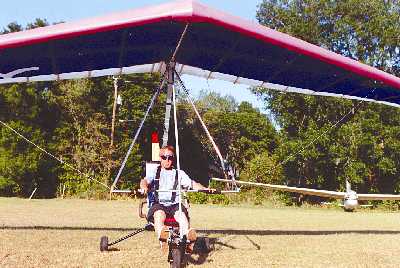

Pilots may carry a backup parachute in the harness. The inherent danger of gliding at the mercy of thermal and current of air currents has nevertheless resulted in numerous fatal accidents and many serious injuries over the years, fifty-fifty to experienced pilots, and the resulting bad publicity has affected the popularity of hang gliding.
#Ftb hang glider drags me down mod
All mod gliders have built-in dive recovery mechanisms such every bit luff lines in kingposted gliders. Although lightweight they can be easily damaged, either through misuse or by continued operation in unsafe air current and weather atmospheric condition. Modern hang gliders are very sturdy when constructed to HGMA, BHPA, DHV, or other certified standards using modern materials. Hang gliding has traditionally been considered an dangerous sport. Dickenson adapted the flexible fly airfoil concept to brand another h2o-ski kite glider for this, the Fédération Aéronautique Internationale vested Dickenson with the Hang Gliding Diploma (2006) for the invention of the modernistic hang glider.

In 1963 Mike Burns adapted the flexible wing to build a kite-hang glider he called Skiplane. In 1960-1962 Barry Hill Palmer adjusted the flexible wing concept to make foot-launched hang gliders with four different command arrangements. The various stiffening formats and the wing'southward simplicity of design and ease of construction, along with its capability of boring flying and its gentle landing characteristics, did not go unnoticed past hang glider enthusiasts. On NovemFrancis Rogallo and Gertrude Rogallo applied for a kite patent for a fully flexible kited wing with canonical claims for its stiffenings and gliding uses the flexible wing or Rogallo wing, which in 1957 the American infinite bureau NASA began testing in diverse flexible and semi-rigid configurations in order to utilize it as a recovery system for the Gemini space capsules. Volmer Jensen with a biplane hang glider in 1940 chosen VJ-xi immune safe three-centrality command of a foot-launched hang glider. In April 1909 a how-to article by Carl Due south.Bates proved to be a seminal hang glider article that seemingly affected builders fifty-fifty of contemporary times, as several builders would have their first hang glider made from post-obit the plan in his article. The biplane hang glider was very widely publicized in public magazines with plans for edifice such biplane hang gliders were synthetic and flown in several nations since Octave Chanute and his tailed biplane hang gliders were demonstrated. In 1910 in Breslau the triangle control frame with hang glider airplane pilot hung backside the triangle in a hang glider was evident in a gliding club's activity. In the decade 1900-1910 hang gliding saw a stiffened flexible fly hang glider in 1904, when Jan Lavezzari flew a double lateen canvas hang glider off Berck Beach, France. (He was fastened to the gliders by his shoulders, and swung his anxiety to control them.) His aircraft was controlled past weight shift and is similar to a modernistic hang glider. He rigorously documented his work, strongly influencing afterwards designers for this reason, Lilienthal is one of the all-time known and most influential early aviation pioneers. Otto Lilienthal built (barely) controllable gliders in the 1890s, with which he could ridge soar. Starting in the 1880s technical and scientific advancements were fabricated that led to the start truly practical gliders. Near early glider designs did non ensure prophylactic flight the problem was that early on flight pioneers did not sufficiently understand the underlying principles that fabricated a bird's wing work. NASA's Paresev glider in flight with tow cable.

Gaining the safety benefits from being instructed is highly recommended. The Fédération Aéronautique Internationale and national airspace governing organizations control some aspects of hang gliding. However, modern technology gives pilots the ability to soar for hours, gain thousands of metres of altitude in thermal updrafts, perform aerobatics, and glide cross-country for hundreds of kilometres. In the sport's early days, pilots were restricted to gliding down small hills on low-operation hang gliders. The pilot is ensconced in a harness suspended from the airframe, and exercises control by shifting body weight in opposition to a command frame, but other devices, including modernistic aircraft flight control systems, may be used. Most modern hang gliders are made of an aluminium blend or blended-framed textile wing. Hang gliding is an air sport in which a airplane pilot flies a light and unmotorized foot-launchable aircraft chosen a hang glider (besides known as Delta airplane or Deltaplane). Supported by aerodynamic elevator (aerodynes) Supported past LTA gases + aerodynamic lift Supported past lighter-than-air gases (aerostats) Hang glider launching from Mount Tamalpais


 0 kommentar(er)
0 kommentar(er)
